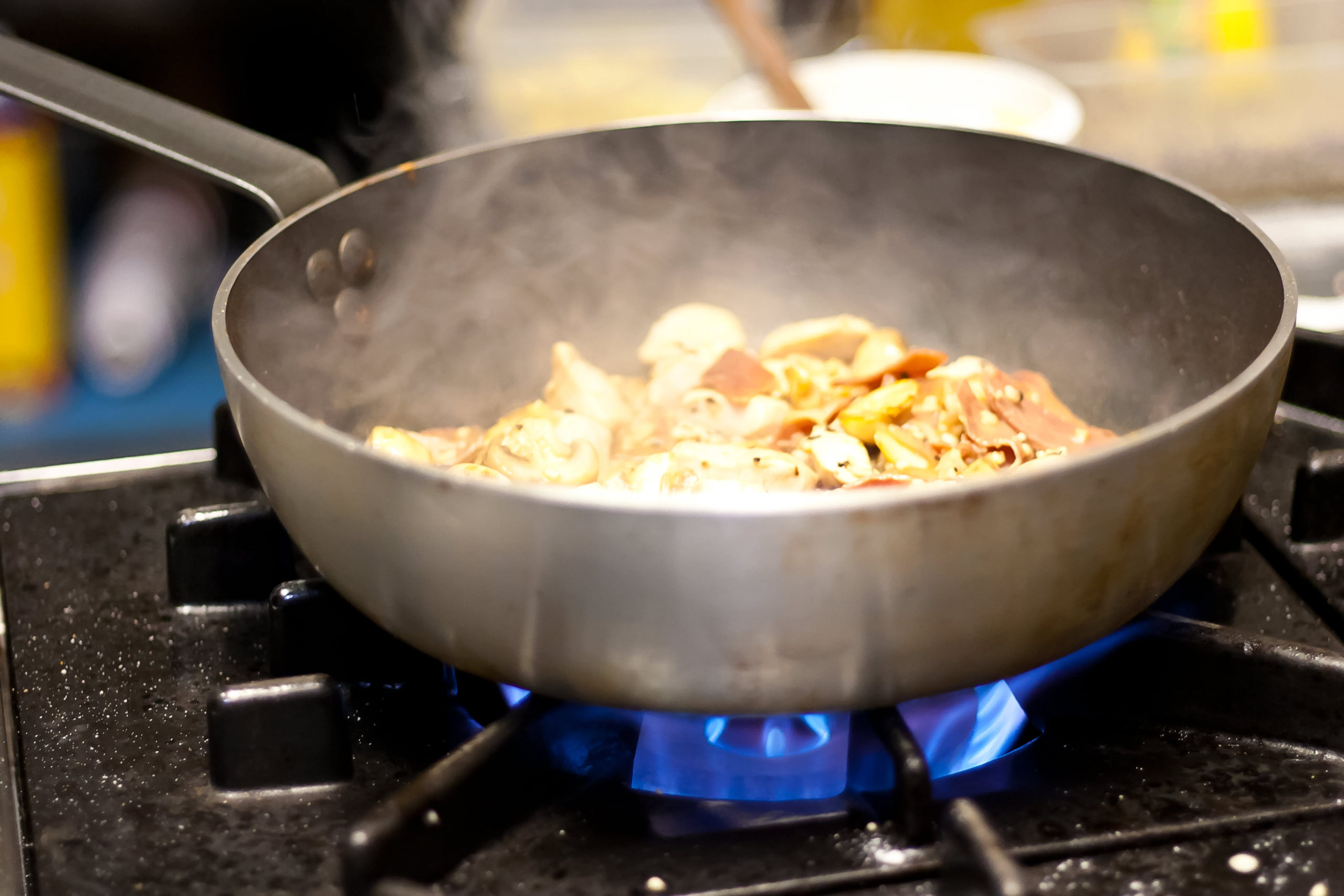
By Rihab Khalid, University of Cambridge.
With the lockdown in place and most restaurants closed for business, people have been spending much more time in their kitchens preparing home-cooked meals. Estimates show that there will be 503 million more (+38%) in-home meals eaten per week during the lockdown period, with the average household spending almost seven hours a week cooking their meals.
This change in UK households’ eating and cooking habits has inevitably had an impact on energy consumed at home. According to Uswitch, there has been an estimated household increase of 25% electricity and 17% gas use per day, with peaks at lunchtime when cooking adds to the overall demand.

27% more household electricity is being used at 1 pm compared to pre-lockdown data as more of us eat lunch at home. Image: Bulb
These changes in household energy consumption are part of a wider global shift in demand under the pandemic. Now, more than ever, it is imperative to re-examine the UK’s heat strategy to reduce carbon emissions. Below are three key challenges that exist and opportunities that may now seem more plausible and relevant in the transition towards low-carbon cooking.
When it comes to heat decarbonisation, both policy and industry focus more on improving cooking technology, fuel efficiency, and appliance specifications. However, not enough attention is paid to changes in end-use and consumer behaviour for low-carbon cooking. Studies show that the style of cooking can have a significant impact on cooking heat emissions, resulting in 30-50% variation in energy consumption.

60% of total energy consumption in the UK takes place in the domestic sector. 44% of the total energy consumed is used for heating. Although cooking accounts for just 2% of total UK carbon emissions, it will need to be shifted away from natural gas for low-carbon heating in homes. Image: freeimages.com
Oven and grill cooking is generally more energy-intensive than hob cooking. However, health perceptions may dictate more oven use, which is seen as a more convenient and healthier alternative. The fuel type for cookers can also be dependent on the style of cuisine. While a gas cooker lends itself well to wok stir-fries, char-grills, and South Asian chapatis, electric and induction hobs do not provide the same level of functionality, making it more difficult to switch to low-carbon alternatives.
Staying at home during the pandemic has meant greater flexibility in cooking practices, however, it is still very much bound by social factors like cultural norms, food expectations, market availability, practitioner skills, and dietary considerations. These interconnected factors must be considered for a successful transition to low-carbon cooking.
Data suggests that cooking and its appliance use are strongly linked with sociodemographic characteristics such as household size, gender, age, and presence of children. This indicates that any transition in cooking technology is likely to have distributional impacts, in which some segments of the population (e.g. women, older/low-income households, households with children, etc) will be affected more than others. It also means that a one-size-fits-all solution will not work.
 Household annual electricity use for cooking per person per family unit size, England 2010-11 (kWh/year). Image: DECC
Household annual electricity use for cooking per person per family unit size, England 2010-11 (kWh/year). Image: DECC
Existing national datasets (like ECUK and EFUS) provide some information on cooking technology and appliance use (e.g. hours/week spent cooking). However, scarce information exists on cooking durations; timings; contribution to peak loads; and demographic/geographic and cultural variations in cooking methods and fuel types. It is essential to fill this gap by recognising the differences in cooking practices and designing policies that benefit all segments of society.
Cooking is a complex practice. Instead of simply depending on individual preferences, it is deeply integrated into larger work-home routines, social relations, health and dietary considerations, cultural understandings, and food chain networks. So, while low-carbon interventions like targeted messaging, cost incentives, and relevant information are important, they can only go so far in reducing emissions.
A combination of socio-technical strategies can lead to low-carbon transitions in a more systemic way, such as promoting more shared eating and cooking spaces; opportunities of social learning and cultural inclusivity; and aligning with organisations that play a catalysing role (e.g. catering industries, home retrofitters, etc). This can further be augmented with improved design, marketing, and installation, as well as reconfiguring product and service systems. Instead of incremental changes from technology replacement and consumer choice, this can lead to large-scale reductions by opening up opportunities for change at the community level (collective social transition), and even the city level (institutional and infrastructural transition).

Combined individual, social and material action for low-carbon cooking transitions
If there is one lesson to be learned from the present crisis, it is that nothing is set in stone. The lockdown is testament to how quickly change can occur in the food industry and new patterns develop for shopping and cooking habits. Change is therefore inevitable, and disruption can leadto a ‘new normal’. This presents an incredible opportunity for policymakers and consumers alike to re-define heat decarbonisation transitions and to plan a truly low-carbon future for us to go back to from this crisis.
This blog is based on the UKERC publication The social dimensions of moving away from gas cookers and hobs: challenges and opportunities in transition to low-carbon cooking, which is part of the Energy-PIECES project.
More about the author can be found here.